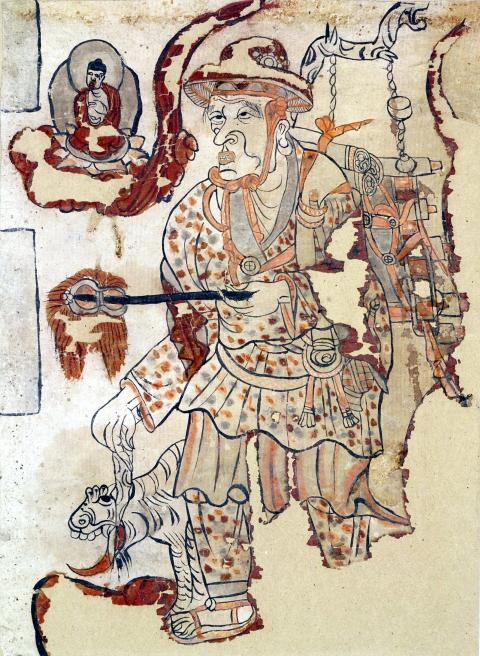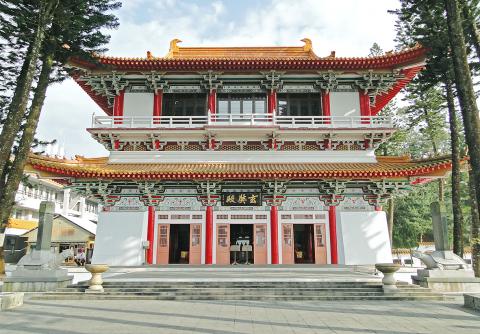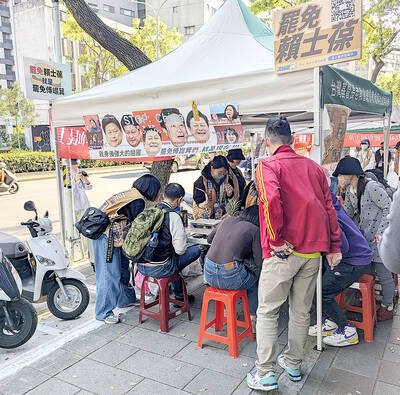Taiwan in Time: Nov. 23 to Nov. 29
Songshan Airport was flooded with six-colored Buddhist flags on the morning of Nov. 25, 1955, as a large crowd waited eagerly for the plane doors to open.

Photo courtesy of Wikimedia Commons
Cheers erupted as five Japanese monks exited a plane, the one in front holding a box. A 100-car procession followed them out of the airport, with people praying and burning incense on the side of the road all the way to Shandao Temple (善導寺), where more than 1,000 people watched as the Japanese monks handed the box to Taiwanese monks.
The box housed a prized relic, a piece of the legendary Chinese monk Xuanzang’s (玄奘) skull. The fragment today rests at Xuanzang Temple (玄奘寺) at Sun Moon Lake.
Xuanzang’s claim to fame is his journey by foot to India to seek Buddhist sutras, a story that’s immortalized in the classic novel Journey to the West (西遊記).

Photo courtesy of Wikimedia Commons
In late 1942, Takamori Takasuke, commanding officer of the Japanese troops stationed in China’s capital city of Nanjing was overseeing construction of a Shinto shrine outside of the city gates. An officer reported that they found something unusual — a stone box containing a piece of bone. Inscriptions reportedly identified the owner as Xuanzang, whose remains had been considered lost after the temple that housed it was destroyed in 1856.
Accounts vary on what happened to the bone. Sun Moon Lake’s official Web site and other tourism publications state that the Japanese brought it back to their home country. However, most academic sources, including Hsuan Chuang University (玄奘大學) religion professor Huang Yun-hsi (黃運喜), say it was broken into three pieces, one going to Beijing, one staying in Nanjing and the third piece being brought to Japan and placed in a shrine.
This division of relics isn’t without precedent. When Siddhartha Gautama (also known as Buddha) died, eight Buddhist countries laid claim to his remains. To avoid war, a monk divided the remains (or part of them) into eight pieces and each king brought one home to worship.
After the Chinese Civil War, the Buddhist Association of the Republic of China (中國佛教會) retreated to Taiwan with the Chinese Nationalist Party (KMT). They, too, decided they wanted a piece of the bone.
Fo Guang University assistant professor Kan Cheng-tsung (闞正宗) writes in a paper about Xuanzang’s remains that the association first requested the bone during the 1952 World Buddhist Fellowship conference in Japan. Negotiations stalled with the death of Takamori, while the Chinese Communist Party (CCP) aggressively tried to block the move, saying it rightfully belonged to China and the Japanese “plundered” it during the war.
An announcement by the Central News Agency stated that the bone needed to go to “free China,” referring to the Republic of China government in Taiwan, instead of the “fake bandit Buddhist association” (偽匪佛教協會) of Beijing.
A telegram by the Ministry of Foreign Affairs further stated that China shouldn’t get the bone because the communists were anti-religion and didn’t allow freedom of worship, and to succumb to their demands would leave a “bad impression on the free world.”
This didn’t turn out entirely false, as at least two pieces of the bone were reportedly destroyed during the Cultural Revolution.
Jionji, the temple which housed the bone in Japan, released a statement on Nov. 10, 1955 regarding their decision to give a fragment to Taiwan, stating that China already had several of the fragments, and that instead the rest should be distributed to places where it would benefit believers.
They further stated that they were acting in accordance with Xuanzang’s ideals of spreading Buddhism for the benefit of all sentient beings and that there were no political motives. They even agreed to send pieces of the relic to India, where Xuanzang stayed for 15 years.
“Even though the People’s Republic of China and the Republic of China are divided by politics, they have in common their respect and admiration of Xuanzang,” it concluded. “We Japanese Buddhists respect this beautiful religious position.”
Despite other locales such as Miaoli’s Shihtou Mountain (獅頭山) vying to house the bone, the location of Sun Moon Lake was already decided in early 1955, determined to be a “suitable place” by Chang Chia (章嘉), head of Taiwan’s Buddhist association. The original plan was to bring the bone back to Nanjing after the reconquest of China, but obviously that never happened.
The fragment was first housed in a temporary temple near Sun Moon Lake, but the current temple took 10 years to build because of bureaucracy and budget issues. With its completion, the journey of this fragment was complete — for now.
An ironic footnote to the story is that in September 1998, after many years of petitioning the Chinese, Hsuan Chuang University received a different fragment of the skull, split from the piece that remained in Nanjing — from the very country that tried to prevent Taiwan from receiving the same thing 43 years earlier.
Taiwan in Time, a column about Taiwan’s history that is published every Sunday, spotlights important or interesting events around the nation that have anniversaries this week.

That US assistance was a model for Taiwan’s spectacular development success was early recognized by policymakers and analysts. In a report to the US Congress for the fiscal year 1962, former President John F. Kennedy noted Taiwan’s “rapid economic growth,” was “producing a substantial net gain in living.” Kennedy had a stake in Taiwan’s achievements and the US’ official development assistance (ODA) in general: In September 1961, his entreaty to make the 1960s a “decade of development,” and an accompanying proposal for dedicated legislation to this end, had been formalized by congressional passage of the Foreign Assistance Act. Two

Despite the intense sunshine, we were hardly breaking a sweat as we cruised along the flat, dedicated bike lane, well protected from the heat by a canopy of trees. The electric assist on the bikes likely made a difference, too. Far removed from the bustle and noise of the Taichung traffic, we admired the serene rural scenery, making our way over rivers, alongside rice paddies and through pear orchards. Our route for the day covered two bike paths that connect in Fengyuan District (豐原) and are best done together. The Hou-Feng Bike Path (后豐鐵馬道) runs southward from Houli District (后里) while the

On March 13 President William Lai (賴清德) gave a national security speech noting the 20th year since the passing of China’s Anti-Secession Law (反分裂國家法) in March 2005 that laid the legal groundwork for an invasion of Taiwan. That law, and other subsequent ones, are merely political theater created by the Chinese Communist Party (CCP) to have something to point to so they can claim “we have to do it, it is the law.” The president’s speech was somber and said: “By its actions, China already satisfies the definition of a ‘foreign hostile force’ as provided in the Anti-Infiltration Act, which unlike

Mirror mirror on the wall, what’s the fairest Disney live-action remake of them all? Wait, mirror. Hold on a second. Maybe choosing from the likes of Alice in Wonderland (2010), Mulan (2020) and The Lion King (2019) isn’t such a good idea. Mirror, on second thought, what’s on Netflix? Even the most devoted fans would have to acknowledge that these have not been the most illustrious illustrations of Disney magic. At their best (Pete’s Dragon? Cinderella?) they breathe life into old classics that could use a little updating. At their worst, well, blue Will Smith. Given the rapacious rate of remakes in modern